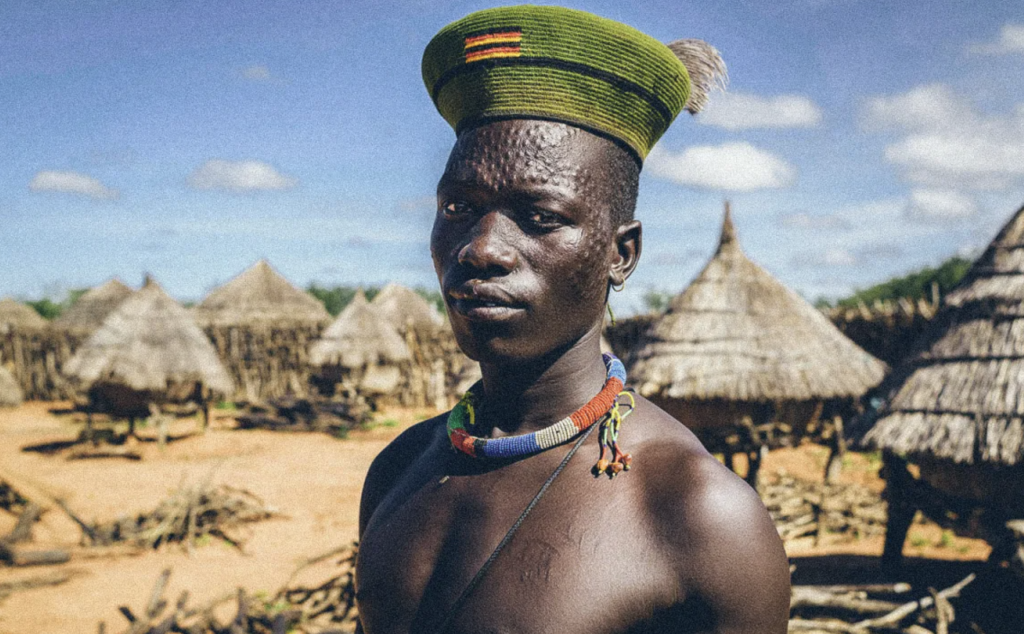

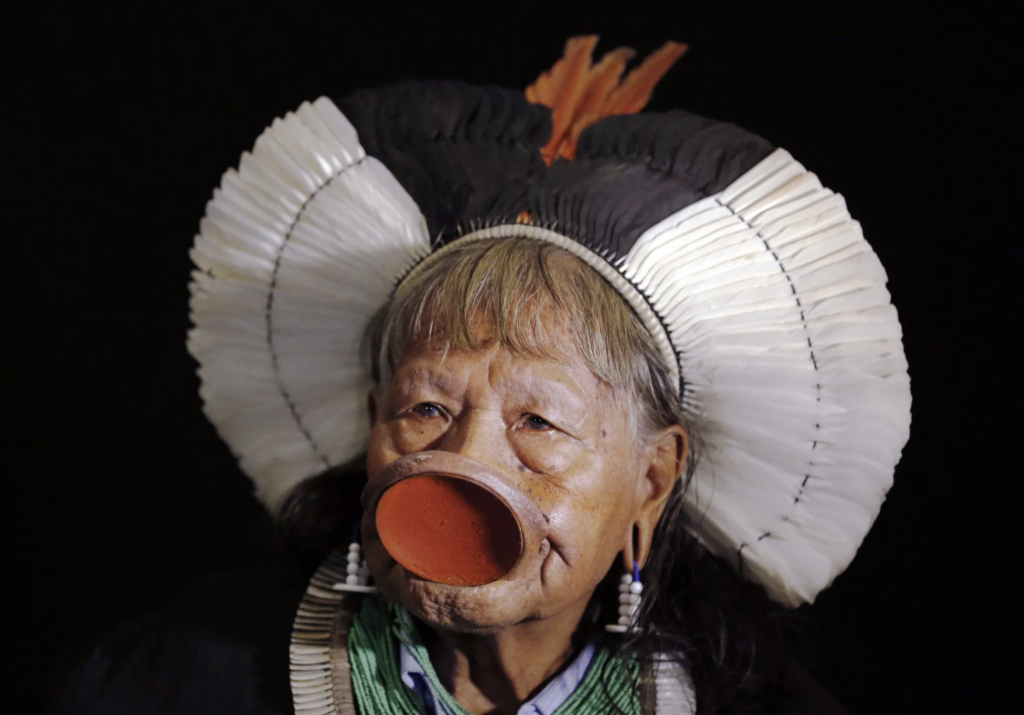

The body modification subculture is a diverse community that embraces unconventional ways of altering the human body beyond societal norms. This includes practices like tattoos, piercings, scarification, and implants & extreme body shaping through plastic surgery. For participants in this subculture, their bodies become a canvas for self-expression, personal identity, and a rejection of societal standards regarding appearance. Those involved in the body modification subculture often undergo extreme modifications, which can involve significant pain, dedication, and a strong sense of agency over their bodies. This may include extensive tattooing, intricate scarification patterns, body piercing, or implants to dramatically alter body contours. These individuals push the boundaries of conventional body alteration, embracing their bodies as unique forms of artistic expression and personal empowerment (Robert 2015).
Participants in the body modification subculture often form close-knit communities and networks, sharing creative experiences, artistic inspirations, and different techniques (Roberts 2014). These communities exist globally but are influenced by varying levels of visibility and acceptance based on cultural, social, and legal factors. For instance, some communities thrive underground, as seen with tattooing in Korea, while others enjoy more mainstream acceptance due to cultural shifts favoring body modifications like tattoos and piercings. Interactions within these communities occur both online, through social media platforms and forums, and in physical gatherings such as tattoo conventions and meetups (Koviazina 2023). Online platforms such as ModMag help form global connections, sharing of experiences, and discussions on trends. This diverse and intergenerational community includes individuals from various backgrounds, ages, and professions, contributing to a rich tapestry of experiences and artistic expressions within the subculture (Tamene 2022).
While people can modify their bodies for aesthetic purposes or as a popular trend, those in the body modification subculture approach modification as an integral part of their identity and self-expression. They embrace body modification as a way of reclaiming ownership of their bodies, challenging societal norms, and celebrating individuality in all its forms.
Introduction:
Tattoos have been used for thousands of years across different cultures for different purposes. Tattoos also represent different meanings, such as status, identity, spirituality, and belonging in certain groups. In today’s world, tattooing has evolved into a vibrant subculture characterized by a passion for body art, self-expression, and individuality (Tabassum 2013). Throughout much of the last century, tattooing was often tied to deviant behavior and considered socially undesirable and dangerous (Perraudin 2018). Recently, however, there has been a shift in the acceptability of body modification such as tattooing. Scholars and news reporters are quick to point to members of society modifying their bodies for various reasons, including identity salience, rebellion, and aesthetics (Roberts 2015). Within the tattooing subculture, there is a wide range of perspectives, styles, and practices (Perraudin 2018). Many enthusiasts view tattoos as a form of personal storytelling, using images and symbols to convey personal experiences, beliefs, and various emotions. The subculture also includes tattoo collectors, which are individuals who obtain a collection of tattoos over time, with each piece contributing to a larger narrative or aesthetic. Tattoo conventions, studios, and online communities serve as hubs for sharing ideas, showcasing artwork, and fostering connections among enthusiasts (Koviazina 2023).
Ancient Origins and Symbolism:
Tattooing has ancient origins that span across various cultures, including ancient Egypt, Polynesia, China, Japan, and indigenous societies. These tattoos were created using primitive tools and held symbolic meanings tied to spirituality, social status, identity, and cultural heritage. For example, in ancient Egypt, tattoos signified devotion to deities, while in Polynesia, they conveyed genealogy and personal achievements (Mark 2017). In Japan, tattoos symbolized bravery and loyalty, evolving into intricate art forms like “irezumi (Ortis 2023).” Across these cultures, tattoos served as visual narratives, connecting individuals to their communities, traditions, and beliefs, making them powerful and, at times, necessary expressions of human history and identity.
Artistic Progression and Styles:
Tattooing has evolved significantly, showcasing styles that reflect cultural influences, technological advances, and artists’ unique styles. Traditional forms like American Traditional and Japanese Irezumi laid the foundation, known for the bold outlines and iconic imagery (The Honorable Society 2024). American Traditional shows off anchors, skulls, and roses, while Irezumi features intricate mythical creatures and symbolic motifs (Ortis 2023). By the mid-20th century, Black and Grey realism emerged, using black ink gradients for lifelike portraits (Meraji 2018). This style’s mastery of shadow and light remains influential. Neo-Traditional combines American Traditional with contemporary palettes and intricate detailing, creating new life into classic designs (Molenaar 2023). Advancements in technology also allowed styles like Watercolor, which makes the tattoo look like paintings. Fine Line tattoos also gained popularity due to the delicate, minimalist designs (Snape 2023). Today’s tattoo artists often blend styles, showcasing vibrant and diverse artistic styles.
Integration within Body Modification:
Tattooing is a significant aspect of the broader subculture of body modification. Within this subculture, tattoos play a crucial role as a form of permanent body art. Tattoos integrate with the body modification subculture in several ways. First, they share common themes of individuality, self-expression, and pushing the boundaries of traditional aesthetics. Both tattooing and other forms of body modification, such as piercings, scarification, and implants, allow individuals to transform their bodies according to their unique preferences and beliefs (Otunnels 2023). Furthermore, the subculture of body modification often fosters a sense of community and acceptance among enthusiasts. Tattoo studios, piercing shops, and body modification events serve as gathering places where people can share their experiences, showcase their art, and connect with like-minded individuals (Koviazina 2023). This sense of belonging contributes to the cohesion of the body modification subculture. Additionally, tattooing intersects with other forms of body modification in artistic collaborations. For example, some tattoo artists specialize in creating designs that complement existing piercings or scarification patterns, resulting in cohesive and visually striking body modifications (Otunnels 2023). Overall, tattooing is an integral part of the subculture of body modification, embodying self-expression, community, and artistic innovation that define this diverse and evolving culture.
Societal Perceptions:
Tattoo popularity has increased in recent decades, with over 20% of American adults now sporting at least one tattoo (Tabassum 2013). This increase in tattooing extends to a more diverse demographic, including individuals from various racial, gender, social class, and subcultural backgrounds. There’s a greater variety in tattoo designs, meanings, quality, and acquisition methods. Despite the modernization and mainstream acceptance of tattooing, societal stigmas surrounding tattoos have seen little change. Many still view tattoos as outside the norm of acceptable behavior, associating them with subpar individuals or questioning their attractiveness, particularly for women (Tabassum 2013). These negative stigmas persist despite significant shifts in tattooing practices. They often focus on lifestyle choices, productivity, personality traits, and, for women, deviations from traditional gender roles. Women, especially, face additional scrutiny due to the historical association of tattooing with masculinity. However, there’s evidence that these stigmas are evolving, with attitudes toward tattoos becoming more varied and nuanced. The history of women in tattooing reflects this changing landscape. Initially met with resistance and restrictive policies in tattoo parlors, women tattoo artists emerged in the 1970s, creating spaces where women could freely express themselves through tattoos (Bertucci 2010). Today, women account for over half of all tattoos acquired, indicating a significant shift in societal perceptions and practices regarding tattooing (Tabassum 2013). Additionally, it’s important to note that the notion of stigma surrounding body modification is socially constructed and has changed over time, reflecting shifting cultural attitudes, norms, and perceptions. What was once considered deviant may now be widely accepted or even celebrated in society. The evolution of stigma surrounding body modification underscores the dynamic nature of social construction and the power of cultural context in shaping perceptions and meanings. As societal attitudes continue to evolve, so too do the meanings and interpretations of body mods, highlighting the importance of understanding the historical, cultural, and social contexts that influence our perceptions of the body and self-expression.
Women in the Tattoo Subculture
Introduction:
The art of body piercing has a rich history, from ancient rituals to modern expressions of individuality. Piercing was once primarily limited to earlobes, and now has evolved into a diverse subculture encompassing a many different body parts (Houlihan 2018). For many, piercings represents personal identity, cultural heritage, and spiritual beliefs. The piercing subculture is a vibrant community, where enthusiasts can gather in studios, online platforms, and events to share their passion, experiences, and knowledge. Individuals come together to share their creativity, self-expression, and use their piercings to tell unique stories and contributes to the diversity of body modification (Clark 2023). Body modification and digital subcultures theory relate in their shared emphasis on identity expression, community formation, resistance to dominant norms, and the transformative potential of digital spaces in shaping cultural practices and identities.
Historical Origins and Cultural Significance:
The practice of piercing has ancient origins, dating back thousands of years and sharing a history with tattooing. Ear piercings, like those seen on Ötzi the Iceman, have been popular since ancient times, serving various purposes, from cultural traditions to superstitions about warding off evil spirits. Sailors in the post-1600s era adopted ear piercings for supposed benefits like improved eyesight and protection at sea. In different cultures, such as Borneo, ear piercings symbolize familial ties, while in the West, earlobe piercings for infants and adults remain common for cosmetic reasons (PainfulPleasures 2021). Lip, tongue, and septum piercings have been part of tribal cultures for centuries, with septum piercings particularly popular among warriors for their fierce appearance in battle. These piercings often featured natural materials like bone, tusks, or wood as jewelry, showcasing the rich and diverse history of body modification practices across cultures (PainfulPleasures 2021).
Artistic Evolution and Styles:
Traditional piercing styles, like earlobe piercings and nostril piercings are still popular choices today. These piercings are often simple jewelry designs like studs, rings, or hoops and offer a classic look that’s common in society. In recent years, the piercing industry has seen a surge in innovative styles and placements, increasing the possibilities for self-expression. For example, helix piercings, located on the upper ear cartilage, have gained popularity for their subtle yet stylish appearance (Burdell 2023). Additionally, tragus piercings (situated on the small flap of cartilage in front of the ear canal) give a more edgy look (Hudson 2024). Additionally, surface piercings and dermal piercings have emerged as artistic expressions that defy traditional piercing norms. Surface piercings involve piercing the skin’s surface rather than cartilage or flesh, creating visually striking patterns or designs on flat areas of the body (Lynnloheide 2022). Further, dermal piercings involve embedding a small piece of jewelry beneath the skin’s surface, allowing for a minimalist and modern aesthetic (Lichtenstein 2024). The evolution of piercing styles also extends to jewelry design, with a wide range of materials, shapes, and embellishments available. From metals like titanium to surgical steel to exotic materials like gold, silver, and stones, jewelry options for piercings have become more customizable than ever before. Colorful gemstones and themed accessories further enhance the artistic appeal of piercings, allowing individuals to accomodate their unique style and make a bold statement (O’neal 2024). Globalization has deeply influenced the piercing subculture by facilitating the exchange of techniques, aesthetics, and jewelry designs across borders. This has led to a globalized aesthetic in piercing styles and trends, creating a diverse and inclusive community that embraces creativity and cultural diversity. However, globalization also raises important considerations regarding cultural appropriation and respect for cultural heritage within the piercing subculture.
Integration within Body Modification:
Piercing plays a significant role in the body modification community, integrating with a diverse range of practices aimed at altering the body. Many individuals who engage in body modification, such as tattoos, scarification, and implants, also incorporate piercings into their overall aesthetic. Enthusiasts gather to share experiences, showcase piercings and jewelry collections, and engage in discussions about piercing techniques, aftercare, and trends. Online forums also allow piercing enthusiasts to connect and exchange inspirations (BPH 2024). This forms mutual appreciation and fosters a strong sense of belonging and connection among individuals who are passionate about body modification. Additionally, piercings often complement other forms of body modification. For example, individuals may strategically place piercings to accentuate tattoos or scarification patterns, creating visually stunning and harmonious body modifications.
Traditionally, lip piercing has been a rite of passage into manhood for young men in certain Amazonian Indigenous groups. They wear sizable wooden plates, known as labrets, in their piercings. Among the Kayapó tribe in Mato Grosso and Pará in northern Brazil, senior tribesmen, particularly those with prestigious roles, use lip plates called botoque to signify their status. Chief Raoni Metuktire, a prominent figure among the Kayapó, wears one of the largest lip disks made of mahogany, symbolizing leadership. While the cultural practice is declining among younger generations, the lip disks continue to hold significance as symbols of pride and masculinity in the community (Mendez 2021).

Kayapo chief Raoni Metuktire in 2014
"When a Kayapó boy reaches puberty, he receives a lip piercing, which is gradually stretched with increasingly larger plugs. The hole is fully stretched by age 20 to hold a 2cm thick plate of various widths. The lip plate is intended to deter enemies and identify warriors in the tribe."
-La Carmina (widely published writer who has studied body-modification practices worldwide) Tweet
Introduction:
Scarification is a form of body modification with ancient roots, involving the intentional creation of designs or patterns on the skin through controlled scarring. Unlike tattoos, which use ink to create permanent designs, scarification relies on the body’s natural healing process to produce raised scars that form decorative patterns. This practice has cultural, spiritual, and aesthetic significance in various societies, often symbolizing rites of passage, cultural identity, or personal expression. Scarification has evolved over time, with different techniques and styles used across cultures, making it a fascinating and diverse aspect of body modification (Otunnels 2023).
Historical Origins and Cultural Significance:
Scarification is an ancient practice involving the creation of permanent artistic designs on the skin through cutting or burning, and holds a revered place in many tribal cultures worldwide. In African tribes, scarification has been preferred over tattooing due to its visibility on darker skin and the ease of creating intricate designs. It plays a significant role in milestone ceremonies such as puberty, marriage, and motherhood, symbolizing readiness for important life transitions (MLA 2011). Among the Maori of New Zealand, scarification, known as “moko,” showcases exquisite wood carving skills and serves as a means of individual identification, social status display, lineage tracing, and commemoration of life events like war conquests (Museum of New Zealand 2024). The deeply etched facial scars among Maori men also reflect their readiness for battle and appeal to potential partners. Scarification holds cultural and social significance, contributing to tribal identity, social integration, and increased status within these communities.
Evolution as an Art Form:
Scarification gained traction in Western cultures during the 1980s, notably propelled by the modern primitive movement in the early 1990s. This movement aimed to reconnect individuals with their spiritual selves through body rituals like scarification, inspired by traditional practices of tribal peoples worldwide. The Church of Body Modification (COBM) emerged from this movement, focusing on spiritual body modification and offering experiences like fire walking, tongue splitting, human suspension, and scarification to facilitate spiritual enlightenment. While scarification continues to be practiced for spiritual and religious purposes in tribal cultures and subcultures like COBM, it has also evolved into a recognized art form. Modern scarification artists employ various techniques such as cutting, strike branding, cold branding, abrasion, cautery branding, and electrosurgical branding to create intricate and permanent body art. Among these methods, cutting and electrosurgical branding stand out as superior options due to their precision and control in producing precise scarification designs (PainfulPleasures 2021).
Personal Stories and Expressions:
For individuals who choose scarification, the process and outcome hold personal significance and stories. Scar patterns may represent personal journeys, struggles, or affiliations with specific cultural or social groups. Each scarification experience is unique, reflecting individual narratives, aesthetic preferences, and spiritual connections. For example, forehead scarification is a customary rite of passage among various tribal groups in Sudan, including the nomadic Dinka clans. These etched markings serve as tribal identifiers, with the direction and number of lines distinguishing different Dinka clans. Although this practice is becoming less common, individuals who forego the scarification may face criticism for deviating from traditional tribal customs. The scarification ceremony, typically conducted by a local sorcerer during harvest time, requires the boys to endure the cutting without displaying pain or moving, symbolizing their courage and readiness for manhood (Mendez 2021).

Facial scarification done by the men of the Dinka tribe in South Sudan as a sign of courage and marks the transition to manhood

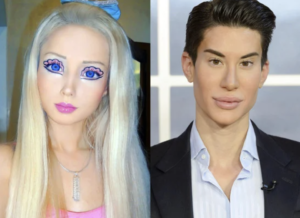
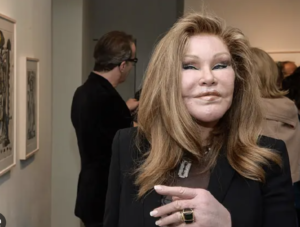
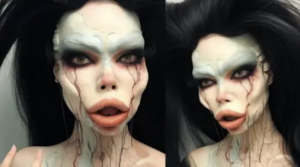

Introduction:
Plastic surgery is a multifaceted community centered around cosmetic and reconstructive surgical procedures. It includes individuals who want aesthetic enhancements, corrective surgeries, and alterations to their physical appearance (Sarwer 2003). Plastic surgery offers a range of options, from facelifts and breast augmentations to rhinoplasty and liposuction, catering to diverse desires and needs (Stanford 2024). Discussions often revolve around beauty standards, body image, self-confidence, and the impact of societal norms on individual perceptions of attractiveness (Furnham 2012). The subculture also digs into the ethical considerations of plastic surgery, such as informed consent, patient safety, and the potential psychological effects of surgical transformations. Plastic surgery enthusiasts, surgeons, and industry professionals form a community that shares experiences, advice, and insights about procedures, recovery, and post-surgical care. This subculture reflects broader trends in beauty ideals, technological advancements in surgical techniques, and evolving attitudes toward cosmetic interventions, making it a fascinating and evolving aspect of society.
Historical Roots and Medical Advancements:
Plastic surgery has deep historical roots dating back thousands of years, with evidence of reconstructive procedures found in ancient civilizations such as India, Egypt, and Greece. Techniques like skin grafting, nasal reconstruction, and wound repair were practiced in various forms, laying the groundwork for modern plastic surgery (Grande 2023). The term “plastic surgery” itself comes from the Greek word “plastikos,” meaning “to mold” or “to shape (Gupta 2024).” However, the formalization of plastic surgery as a medical specialty began in the late 19th and early 20th centuries, thanks to pioneering surgeons like Sir Harold Gillies, often considered the father of modern plastic surgery. Gillies’ work during World War I, particularly in facial reconstruction for soldiers with severe injuries, advanced the field significantly and established principles of aesthetic and reconstructive surgery (Dumont 2015). Throughout the 20th century, plastic surgery continued to evolve with advancements in surgical techniques, anesthesia, and medical technology. The development of microsurgery in the 1960s revolutionized tissue transplantation and nerve repair, enabling more precise and complex reconstructive procedures (Liang 2024). The introduction of synthetic materials like silicone implants in the mid-20th century further expanded the scope of plastic surgery, especially in cosmetic procedures such as breast augmentation (Peng 2020). In recent decades, minimally invasive techniques, such as endoscopic surgery and laser treatments, have become prominent in plastic surgery, offering patients less invasive options with faster recovery times and reduced scarring (Ress 2024). Additionally, advancements in 3D imaging, computer-assisted surgery, and tissue engineering hold promise for further innovations in plastic surgery, improving surgical planning, outcomes, and patient satisfaction (Crisalix 2024). Overall, the historical roots of plastic surgery is continuously improving, with medical advancements enhancing the quality of care for patients.
Evolution into Cosmetic Enhancement:
The evolution of plastic surgery into cosmetic enhancement represents a significant shift in the field’s focus and application. Plastic surgery initially started as a specialty focused on reconstructive procedures (mostly to restore function and appearance after trauma and disease). Now, it gradually expanded to include non-mandatory procedures aimed at enhancing aesthetics and self-image (Furnham 2012). A key factor driving this change is due to the shift in societal attitudes towards beauty and youthfulness. As cultural ideals of attractiveness evolved over time, so did the demand for procedures that could alter or enhance physical features to align with these societal standards. Additionally, advancements in surgical techniques, anesthesia, and medical technology also played a significant role in making cosmetic enhancements safer and more accessible. Specifically, the rise of celebrity culture, social media influence, and digital platforms (Instagram & TikTok) further propelled the popularity of cosmetic surgeries (Thawanyarat 2023). Many individuals want to achieve the looks of their favorite celebrities. This cultural shift, combined with increasing awareness and acceptance of cosmetic procedures by mass media, led to a growing market for services ranging from non-invasive treatments like Botox and dermal fillers to more complex surgeries such as facelifts and body contouring (Jansen 2024). Many individuals view cosmetic procedures as a way of enhancing their overall well-being by boosting their self-esteem to feel more comfortable in their skin.
Diversity of Procedures and Individual Experiences:
Plastic surgery can push the boundaries of conventional aesthetics and challenge societal norms regarding physical appearance. In the subculture of body modification, individuals may choose extreme plastic surgery as a means of expressing their creativity, asserting personal identity, and challenging traditional beauty standards. Procedures such as extreme body contouring, extreme facial alterations, or extreme genital modifications represent examples of how plastic surgery can be used to transform the body in unconventional and dramatic ways (Shrivastava 2008). Moreover, extreme plastic surgery within the body modification subculture is often accompanied by a strong sense of agency and empowerment. Individuals who undergo these procedures may view them as acts of self-expression, personal empowerment, and reclaiming ownership of their bodies. These transformations can also foster a sense of belonging within the body modification community. However, like any form of body modification, plastic surgery has risks and ethical considerations (AMA 2018). Responsible practitioners and ethical guidelines emphasize the importance of informed consent, patient safety, realistic expectations, and mental health considerations in extreme plastic surgery procedures within the context of body modification (Higgins 2018).

Real-life Barbie doll Valeria Lukyanova
Plastic surgery contributes to how individuals perceive and express their identities. One aspect is the influence on self-perception and body image, where cosmetic procedures can align physical appearance with an individual’s internal sense of identity, enhancing a sense of authenticity. Social comparison processes also play a role, as individuals may seek plastic surgery to meet perceived societal standards, influencing their identity formation in relation to peers and cultural expectations. Additionally, plastic surgery intersects with gender identity and presentation, with gender-affirming surgeries contributing to the construction of a gender identity aligned with one’s internal sense of self (Laungani 2017). Overall, plastic surgery can have a significant influence on identity construction, encompassing self-perception, social norms, agency, and gender identity.
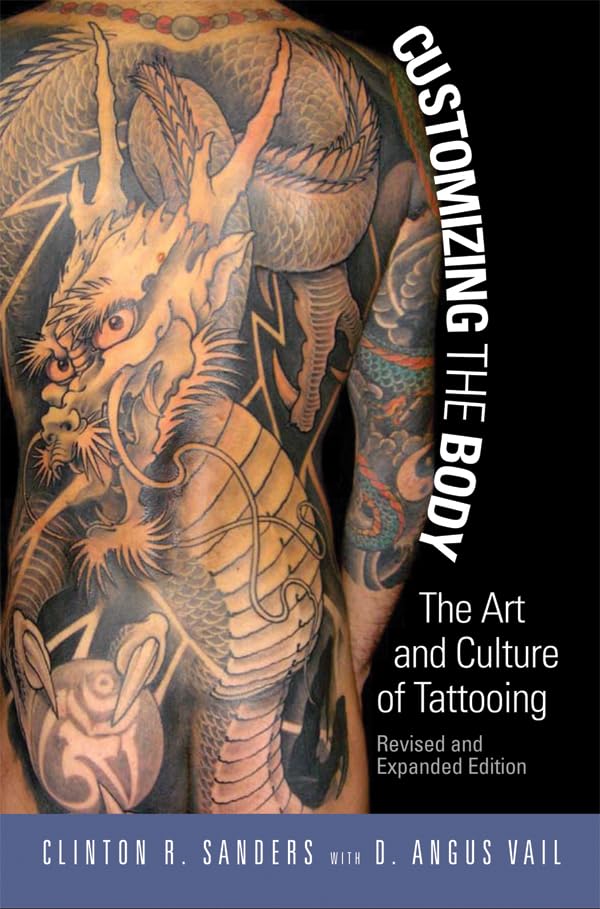
Customizing the Body: The Art and Culture of Tattooing
By: Clinton Sanders & D Angus Vail (Author)
This groundbreaking ethnographic study, first published in 1989, delves into the world of tattooing, exploring its history, anthropology, and sociology. It examines the experiences of tattoo artists, the social implications of becoming a tattooed individual, and the potential for tattooing to be recognized as a legitimate art form. Despite the increasing prevalence of tattoos in contemporary society, there remains a lingering stigma of deviance attached to those who choose to get inked.
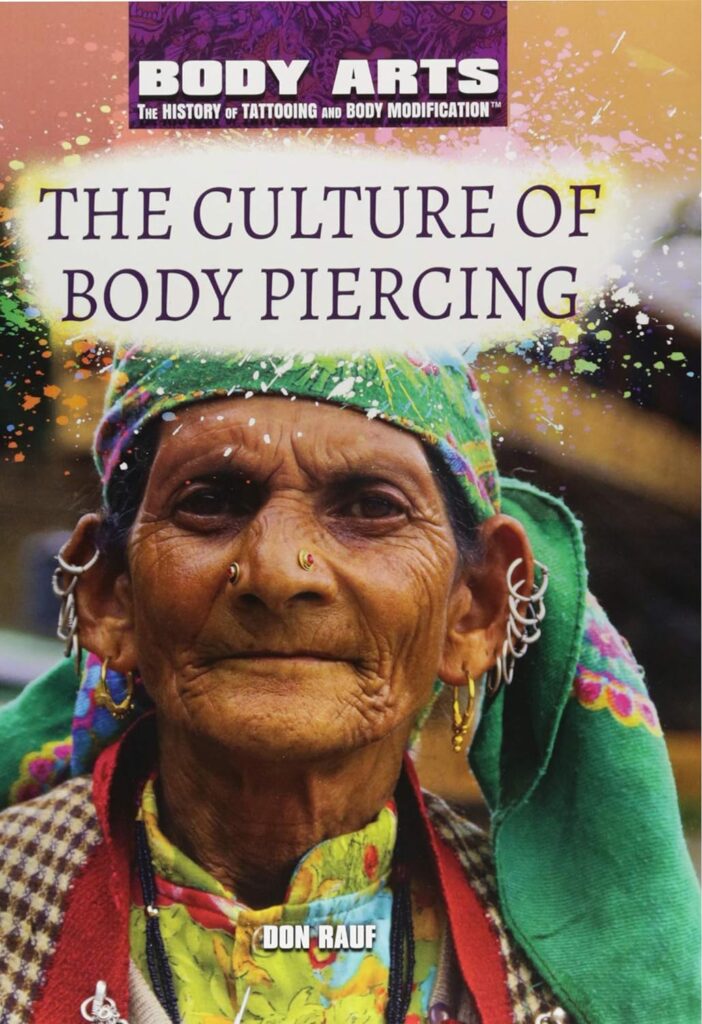
The Culture of Body Piercing
By: Don Rauf
The ancient tradition of body piercing for jewelry has experienced a surge in popularity and societal acceptance in modern times. Individuals of all ages utilize piercing, alongside tattoos and other forms of body modification, as a means of self-expression. Beyond traditional ear piercings, people now adorn their noses, lips, eyebrows, navels, hands, tongues, other parts. This book encourages readers to contemplate important safety and health considerations.
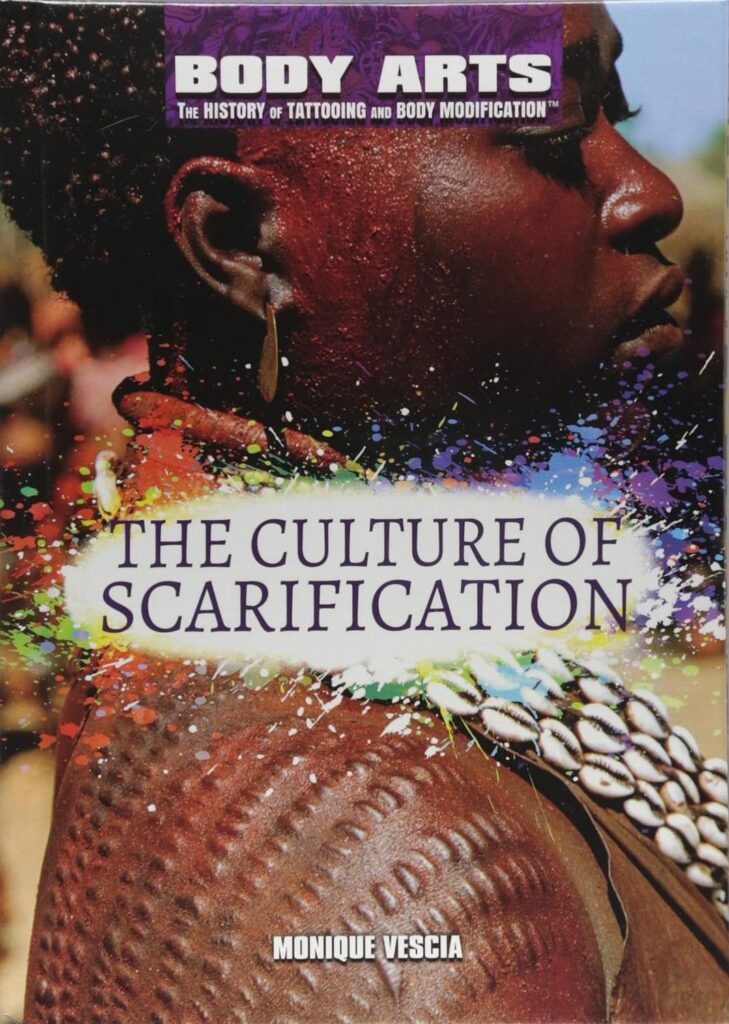
The Culture of Scarification
By: Monique Vescia
Scarification involves making deliberate cuts on the body to produce scars in specific patterns. This intriguing book delves into the cultural heritage of scarification, spanning from ancient initiation rituals to modern practices commemorating the deceased. Readers are introduced to contemporary scarification trends and techniques, while vivid photographs and captivating sidebars provide a detailed glimpse into the world of this unique art form and its practitioners.
Adams, Josh. 2009. “Bodies of Change: A Comparative Analysis of Media Representations of Body Modification Practices.” Sociological Perspectives 52(1):103–29.
Bui, Eric et al. 2010. “Body Piercing and Psychopathology: A Review of the Literature.” Psychotherapy and Psychosomatics 79(2):125–29.
Garve, Roland, Miriam Garve, Jens C. Türp, Julius N. Fobil, and Christian G. Meyer. 2017. “Scarification in Sub‐saharan Africa: Social Skin, Remedy and Medical Import.” Tropical Medicine & International Health 22(6):708–15.
Mayers, Lester B., Daniel A. Judelson, Barry W. Moriarty, and Kenneth W. Rundell. 2002. “Prevalence of Body Art (Body Piercing and Tattooing) in University Undergraduates and Incidence of Medical Complications.” Mayo Clinic Proceedings 77(1):29–34.
Extreme Body Modification:
https://www.cbsnews.com/pictures/13-most-extreme-body-modifications/15/
Tattoo:
Piercings:
https://www.bradley.edu/sites/bodyproject/disability/modification/
Scarification:
https://www.medicalnewstoday.com/articles/scarification
Plastic Surgery:
Duan, Toni. 2024. “Body Modification.” Subcultures and Sociology. https://haenfler.sites.grinnell.edu/body-modification/